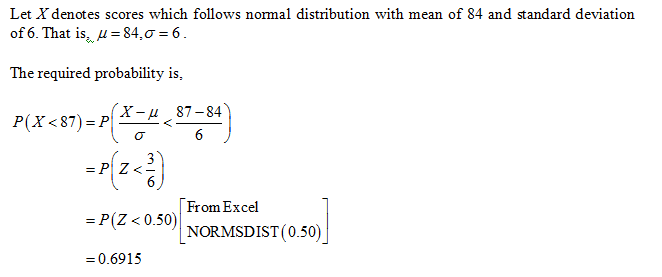The scores for a standardized test follow a normal distribution with a mean test score x¯=84, and standard deviationσ=6. What percent of students score below 87? What percent of students score above 95? What percent of students score between 70 and 90?
Inverse Normal Distribution
The method used for finding the corresponding z-critical value in a normal distribution using the known probability is said to be an inverse normal distribution. The inverse normal distribution is a continuous probability distribution with a family of two parameters.
Mean, Median, Mode
It is a descriptive summary of a data set. It can be defined by using some of the measures. The central tendencies do not provide information regarding individual data from the dataset. However, they give a summary of the data set. The central tendency or measure of central tendency is a central or typical value for a probability distribution.
Z-Scores
A z-score is a unit of measurement used in statistics to describe the position of a raw score in terms of its distance from the mean, measured with reference to standard deviation from the mean. Z-scores are useful in statistics because they allow comparison between two scores that belong to different normal distributions.
The scores for a standardized test follow a
What percent of students score below 87?
What percent of students score above 95?
What percent of students score between 70 and 90?
What percent of students score between 95 and 100?
What score must a student get higher than to be in the top 10%?
Obtain the percent of students score below 87.
The percent of students score below 87 is obtained below as follows:

The percent of students score below 87 is 69.15%.
Step by step
Solved in 3 steps with 3 images









